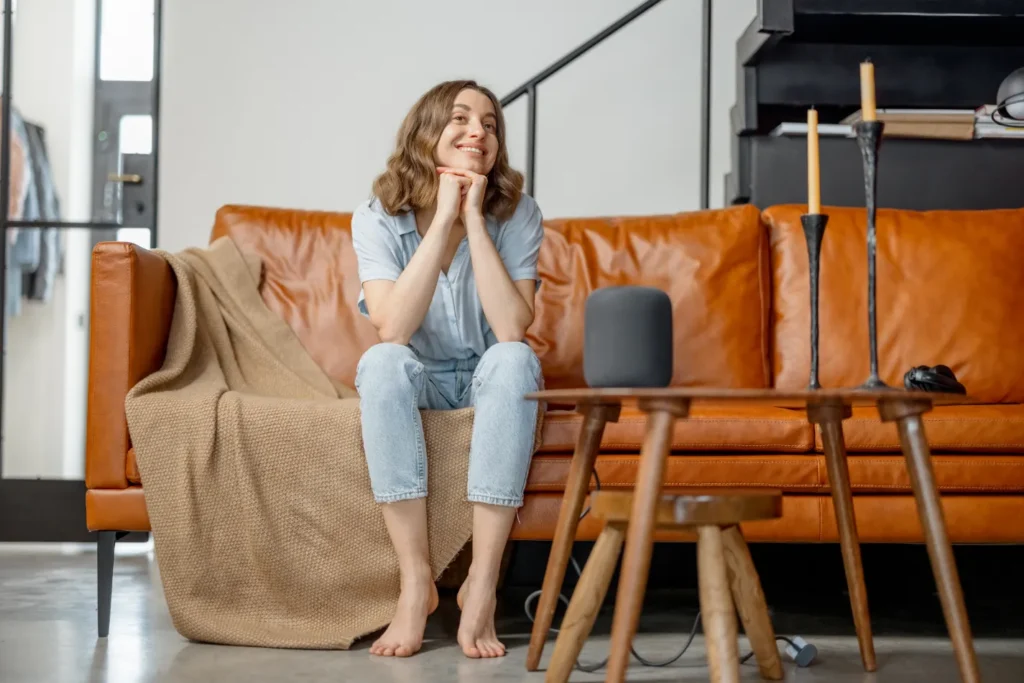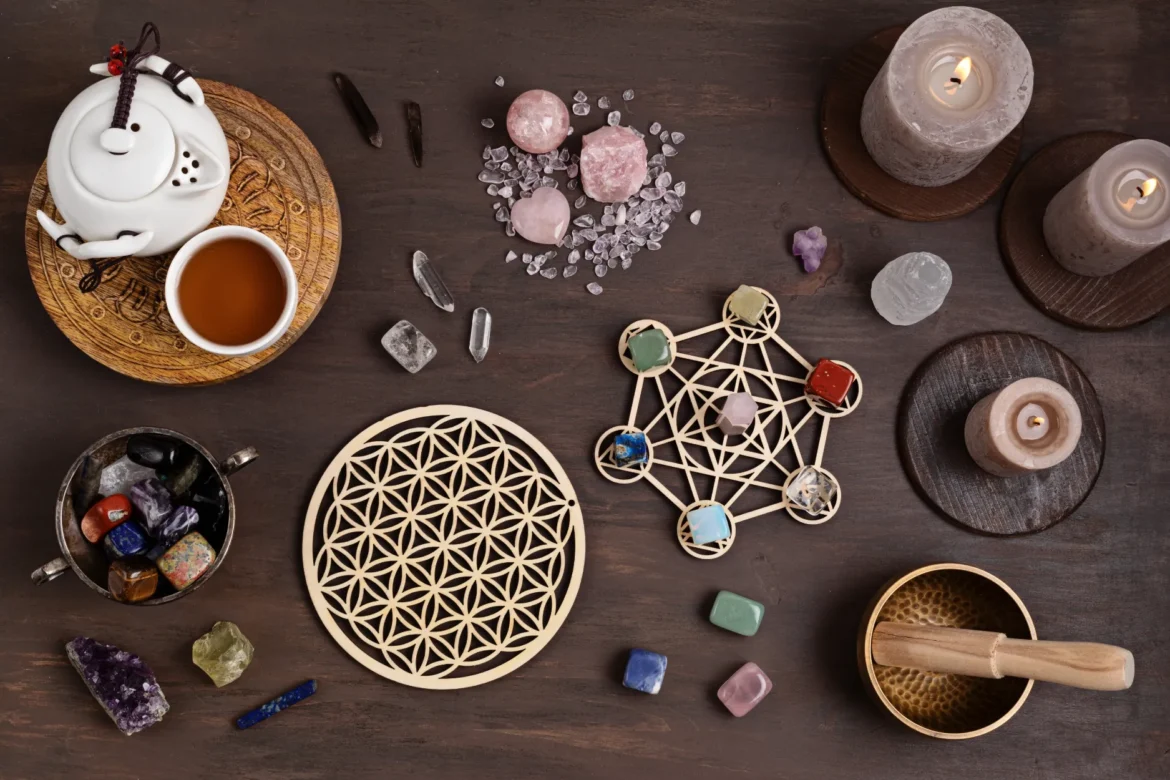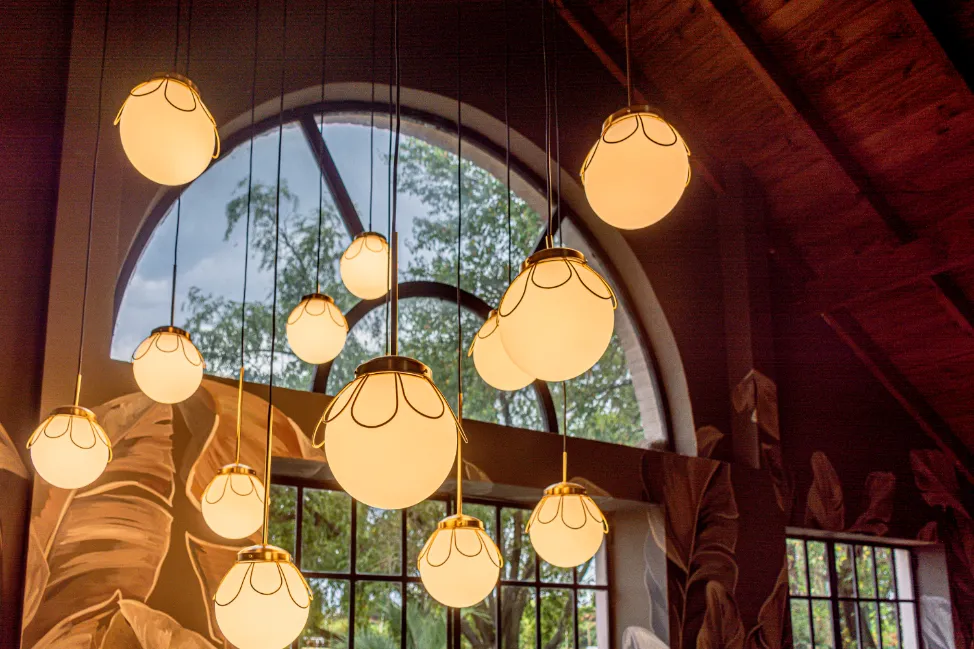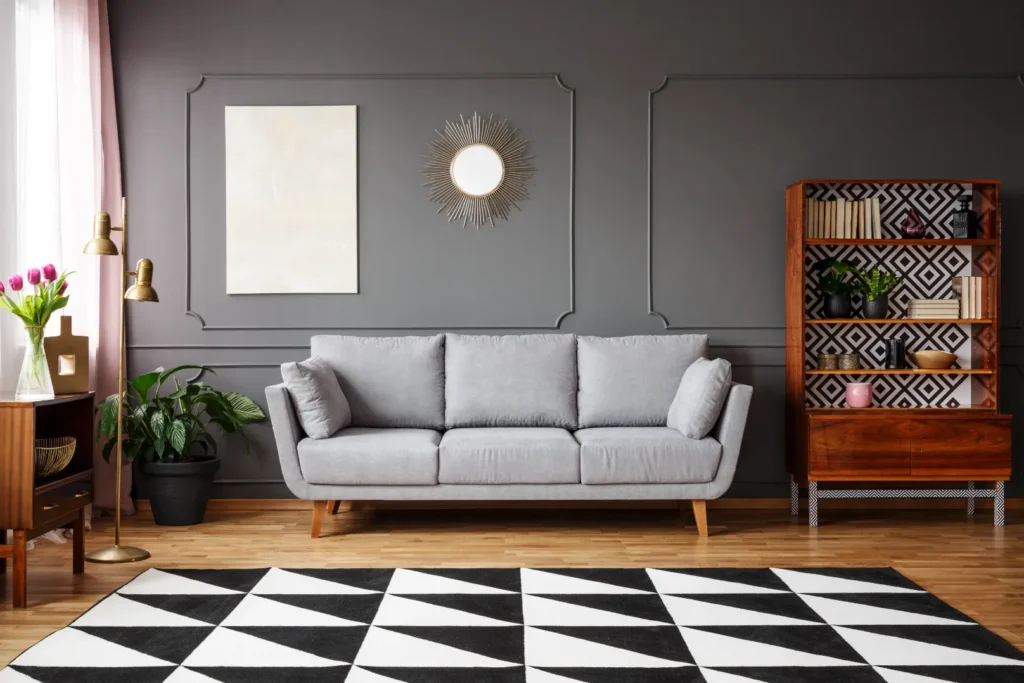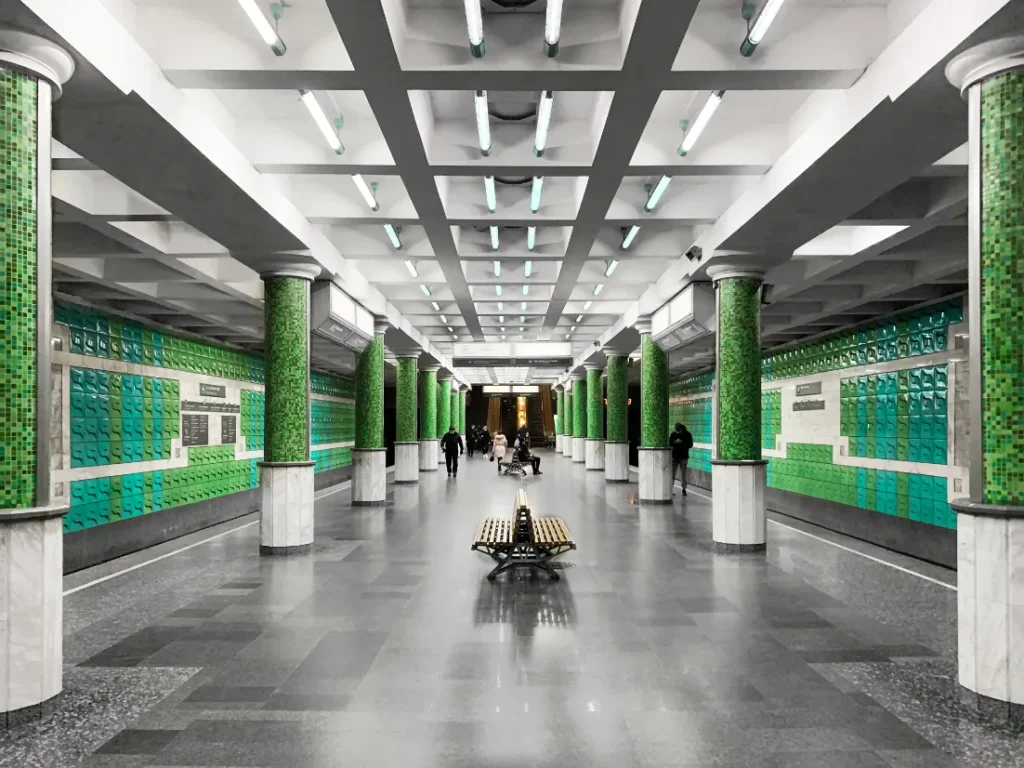Balancing Luxury & Energy With 5 Elements Of Vastu Shastra- Interiors in Delhi-NCR
Overview
Elevate your space with Vastu Shastra-inspired interiors by The White Frame. Harmonize luxury and energy for a balanced, serene environment.
In the rich tapestry of Indian culture, Vastu Shastra stands out as a respected tradition, blending architecture and design. It comes from ancient scriptures and deep wisdom, guiding us towards a balanced living. Rooted in Vedic texts, it’s more than just building rules; it teaches us about the connection between humans and their environment.
Vastu Shastra respects nature’s elements and cosmic energies, believing they shape our world. It sees our surroundings as affecting not just our bodies, but also our minds and spirits. Every aspect, from how buildings face to where objects sit, holds meaning, reflecting the harmony of everything around us.
In today’s interior design world, Vastu Shastra offers timeless wisdom, guiding designers and homeowners to create spaces filled with balance and positivity. While trends come and go, Vastu principles endure, providing a blueprint for spaces that soothe and inspire. In our busy lives, Vastu-compliant design offers a refuge—a place where we can find peace amid the chaos.
Understanding the Basics of Vastu Shastra
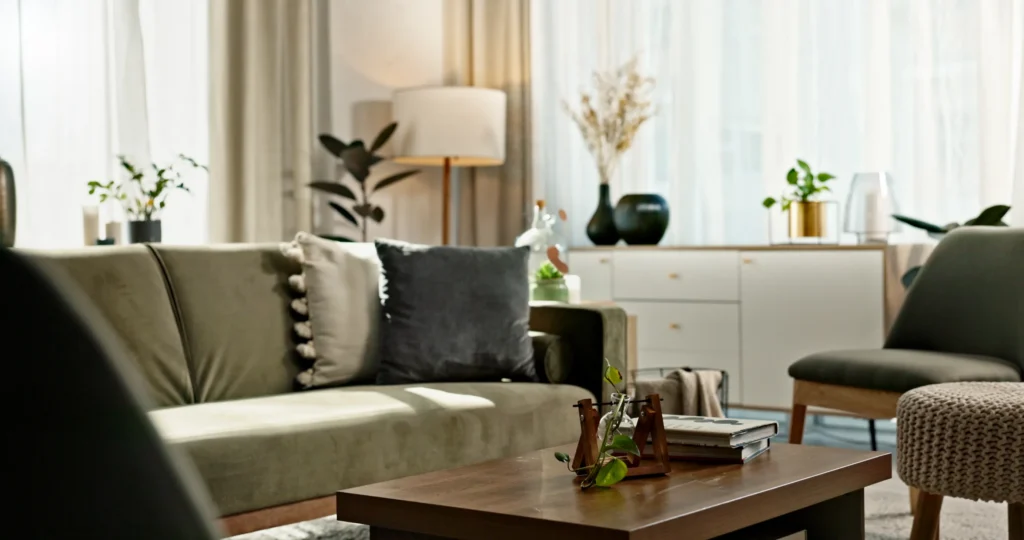
Five Elements (Panchbhootas) and Their Significance
At the core of Vastu Shastra are the five elements—Earth, Water, Fire, Air, and Space. These elements aren’t just materials; they represent the basic forces that shape everything. In interior design, each element has its own importance, contributing to how balanced and peaceful a space feels.
- Earth (Prithvi): Earth means stability and feeling grounded. Using earthy colors and materials like stone or wood in your design can make a space feel solid and secure. For example, having a stone floor or wooden furniture can help you feel more rooted in your living room or bedroom.
- Water (Jal): Water represents flow and cleansing. Adding water features like fountains or fish tanks in your home not only looks nice but also brings positive energy. Having a small fountain near your door or a water element in your bathroom can make your space feel lively and refreshed.
- Fire (Agni): Fire stands for energy and change. Using warm colors like red or orange in your decor can bring excitement and creativity. For instance, having a bright-colored wall or colorful artwork can make a room feel lively and energized.
- Air (Vayu): Air is about movement and openness. Making sure your space has good airflow and open areas can make it feel fresh and spacious. Also, having indoor plants can improve the air quality and make your space feel more alive and growing.
- Space (Akasha): Space symbolizes freedom and possibilities. Keeping your space clutter-free and open can make it feel calm and free. Using minimal furniture and keeping unused areas clear can make your space feel open and peaceful.
Directions (Disha) and their Influence
In Vastu Shastra, each direction has its own importance and can affect different parts of your life. Knowing about these directions can help you arrange your space in a way that brings you positive energy and good luck.
- North (Uttar): North is about wealth and success. Placing important things like your main door or seating areas towards the north can attract prosperity. Also, using water features or blue colors in your decor can boost prosperity energy.
- East (Poorva): East is about growth and health. Having windows or openings facing east can bring in sunlight, which is good for your health. Creating spaces for activities like yoga or meditation in the East can promote vitality and well-being.
- West (Paschim): West is about stability and support. Putting heavy furniture or structures towards the west can make a space feel more stable. Also, using earthy colors or metal accents in your decor can strengthen this supportive energy.
- South (Dakshin): South is about strength and protection. Placing bedrooms or important areas towards the south can make you feel more secure. Using sturdy furniture or warm colors like red in your decor can enhance this protective energy.
Energy Flow (Prana) in Spaces
In Vastu Shastra, energy flow, called Prana, is crucial for creating healthy and happy spaces. There are simple ways to improve energy flow in your home, which can make a big difference in how you feel.
- Keep It Clutter-Free: Clutter blocks energy flow and makes spaces feel stagnant. Having enough storage and keeping things organized can help energy flow freely and make your space feel calm and spacious.
- Let Natural Light In: Natural light and fresh air can lift your mood and energy levels. Opening windows and adding indoor plants can improve air quality and make your space feel vibrant and alive.
- Balance is Key: Balancing different elements in your design can create a sense of harmony. Mixing light and dark colors, soft and hard textures, or symmetrical and asymmetrical shapes can make your space feel balanced and peaceful.
- Try Feng Shui and Vastu Remedies: If you feel like your space has negative energy, there are remedies you can try. Space clearing, sound therapy, or using crystals and mirrors can help remove negative energy and bring positive vibes to your home.
By understanding and applying these basic principles of Vastu Shastra in your interior design, you can create spaces that not only look beautiful but also feel harmonious and uplifting. Whether it’s using the power of the elements, arranging your space according to directions, or improving energy flow, Vastu Shastra offers simple yet effective ways to create a home that supports your well-being and happiness.
Also Read: 5 Impressive Interior Design Trends in Delhi-NCR Worth Noticing in 2024
Vastu Shastra Principles Applied in Interior Design
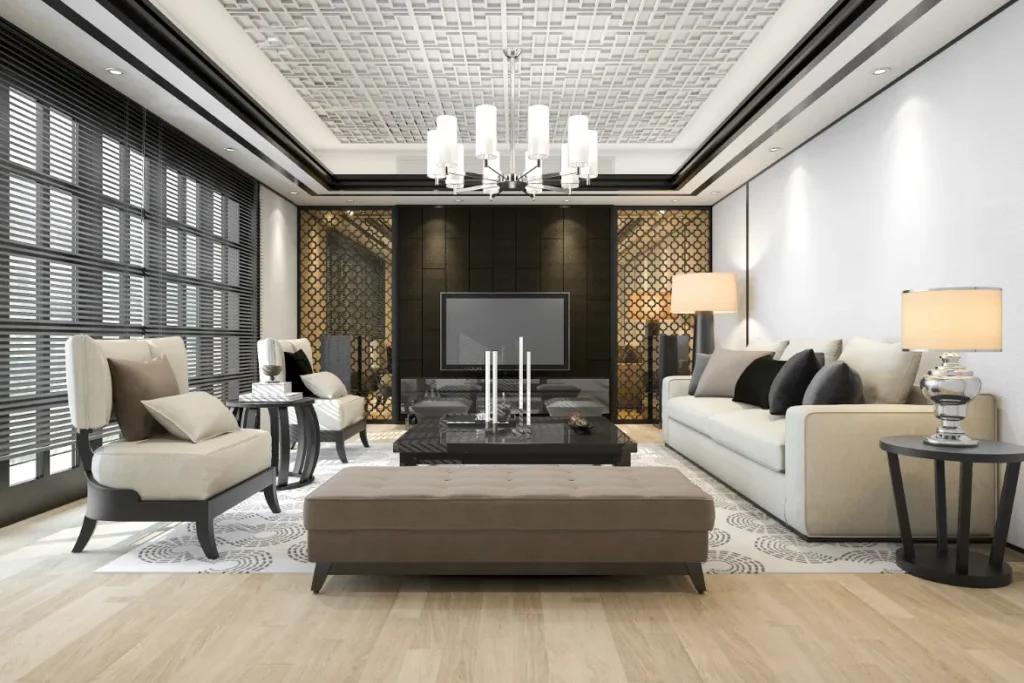
Entrance (Main Door) Placement and Design
The main entrance is crucial in Vastu Shastra as it’s the gateway for energy to enter a home. Ideally, it should face north, east, or northeast to attract positive energy. The design should be inviting and free from clutter, with auspicious symbols like om or swastika.
Layout Planning: Optimal Room Arrangement
Strategic room arrangement facilitates energy flow. Circular layouts encourage interaction, while clutter-free pathways ensure smooth circulation. This promotes unity and vitality within the home.
Color Psychology: Choosing Harmonious Hues
Colors influence emotions and energies. Warm colors like red or orange stimulate activity, while cool tones like blue promote relaxation. Neutrals provide balance, tying the color scheme together.
Furniture Placement: Enhancing Flow of Energy
Furniture should allow energy to circulate freely. Placing the bed in the southwest corner promotes stability while positioning the dining table in the northeast corner encourages prosperity. Avoid sharp edges to prevent energy blockages.
Lighting: Utilizing Natural and Artificial Light Sources
Maximizing natural light and incorporating artificial lighting fixtures create ambiance and vitality. Soft lighting in relaxation areas and bright lighting in activity zones create a balanced environment conducive to well-being.
Material Selection: Balancing Elements
Materials should resonate with the five elements—earth, water, fire, air, and space. Natural materials like wood and stone add stability, while water-resistant materials maintain balance. Metallic accents add vitality.
Spatial Planning: Creating Balanced Zones
Dividing space into functional areas ensures each serves its purpose while maintaining overall coherence. Transitional spaces facilitate smooth movement and energy flow between zones, promoting a seamless living experience.
Incorporating these Vastu Shastra principles into interior design enhances aesthetic appeal and holistic well-being. From the placement of the main entrance to furniture arrangement and material selection, each aspect contributes to creating harmonious spaces that support physical, emotional, and spiritual needs. By prioritizing balance, unity, and vitality, Vastu-compliant interior design fosters environments that nurture the mind, body, and soul.
Integrating Vastu Shastra in Contemporary Design for Delhi-NCR

Fusion of Tradition and Modernity
In the bustling metropolis of Delhi-NCR, where ancient traditions meet modern aspirations, there’s a growing trend of integrating Vastu Shastra principles into contemporary interior design. This fusion of tradition and modernity creates spaces that not only reflect cultural heritage but also cater to the needs and preferences of urban dwellers. By blending Vastu elements with contemporary design aesthetics, designers can create environments that resonate with both timeless wisdom and current trends.
For example, incorporating traditional motifs or architectural elements inspired by Vastu principles into modern interiors adds a sense of connection to Indian heritage while maintaining a sleek and sophisticated look. Similarly, using natural materials like wood and stone, which are central to Vastu principles, in conjunction with sleek finishes and minimalist designs creates a harmonious balance between tradition and modernity. This fusion allows for the creation of spaces that feel rooted in tradition yet are relevant to contemporary lifestyles.
Vastu Shastra in Delhi-NCR Projects
Numerous projects in the Delhi-NCR region exemplify the successful integration of Vastu Shastra principles into contemporary interior design. From residential apartments to commercial spaces, designers have embraced Vastu guidelines to create environments that promote balance, harmony, and well-being.
In residential projects, interior designers can strategically position the main entrance to face the northeast, inviting positive energy into the home according to Vastu principles. By optimizing natural light and ventilation, they can create layouts with open spaces and minimal clutter, promoting a sense of spaciousness and tranquility. Thoughtfully chosen colors and materials contribute to a cohesive and inviting atmosphere, reflecting the clients’ cultural heritage while incorporating modern amenities and comforts.
Similarly, in commercial office spaces, designers can apply Vastu principles to enhance productivity and creativity among employees. By optimizing the layout to promote smooth workflow and communication, designers can create designated zones for collaboration and concentration. Maximizing natural light through strategically placed windows and skylights, along with choosing soothing colors and materials, fosters a calm and inspiring environment conducive to work.
Incorporating Vastu Elements in Urban Dwellings
In urban dwellings of Delhi-NCR, where space is often at a premium, integrating Vastu elements requires creativity and innovation. Designers adapt traditional principles to suit modern lifestyles, finding ways to incorporate Vastu guidelines without compromising on functionality or aesthetics.
For instance, in compact apartments, prioritization may be given to furniture placement and layout planning to optimize energy flow while maximizing usable space. They may also utilize color psychology and lighting design to create the illusion of space and promote a sense of openness and vitality. Additionally, incorporating natural elements like indoor plants or water features brings the outdoors inside, enhancing the connection to nature and promoting well-being in urban settings.
You might also like: Vastu Tips: 25+ ways to boost positive energy in 5 areas of your home
Overcoming Challenges and Adaptations
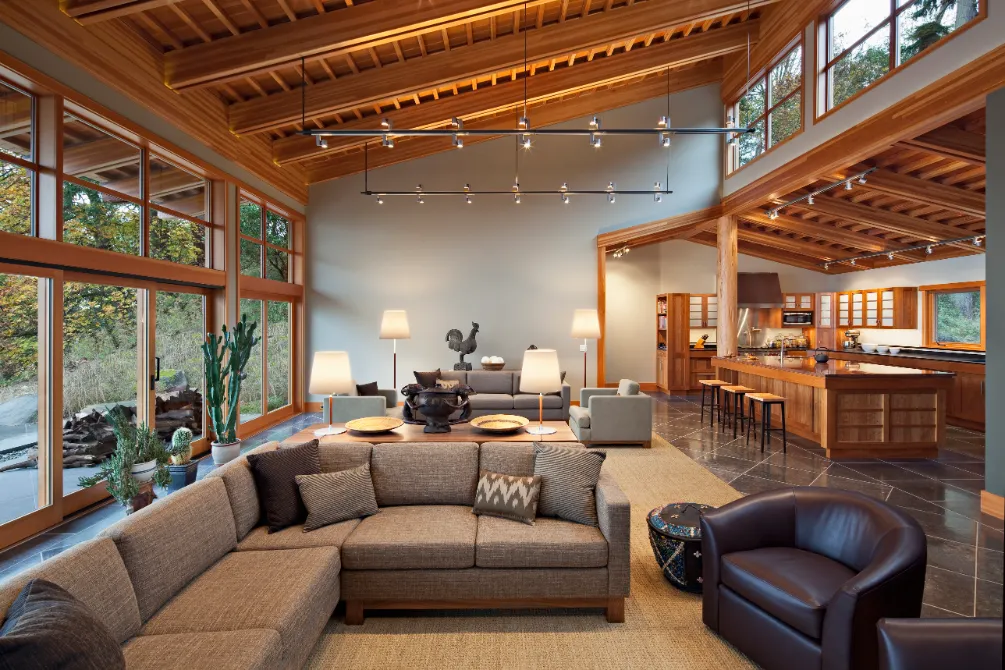
Space Constraints and Structural Limitations
One big challenge in using Vastu principles for interior design is working with limited space and building structures, especially in busy city areas like Delhi. Designers often encounter limited square footage or irregular layouts that may not align perfectly with Vastu guidelines. However, creative solutions can be employed to overcome these challenges while still honoring Vastu principles. For example, utilizing multifunctional furniture or clever storage solutions can maximize space efficiency without compromising Vastu compliance.
Balancing Personal Preferences with Vastu Guidelines
Another challenge designers face is balancing clients’ personal preferences with Vastu guidelines. While some clients may prioritize Vastu compliance for its holistic benefits, others may have strong preferences for specific design styles or elements that may not align with traditional Vastu principles.
In such cases, designers must strike a balance between fulfilling the clients’ aesthetic desires and adhering to Vastu guidelines to create harmonious and balanced spaces. This may involve thoughtful compromises and creative solutions that accommodate both the clients’ preferences and Vastu principles, ensuring a cohesive and personalized design outcome.
Consulting Vastu Experts: Navigating Complexities
Navigating the complexities of Vastu Shastra requires specialized knowledge and expertise, which is why consulting Vastu experts can be invaluable for interior designers. Vastu experts can provide insights and recommendations tailored to specific design challenges and project requirements, helping designers navigate complex Vastu guidelines with confidence and precision.
At The White Frame, we understand the importance of integrating Vastu principles into interior design while overcoming challenges and adapting to the unique needs of each project. Our team of experienced designers combines creativity with technical expertise to curate world-class luxurious interiors that not only reflect our client’s style but also incorporate Vastu tips for a harmonious and balanced living environment.
Whether you’re looking to create a serene home or a vibrant workspace, we provide professional services in and around Delhi-NCR to turn your vision into reality while embracing the wisdom of Vastu Shastra. Get in Touch with us Today!
Benefits of Vastu-Compliant Design
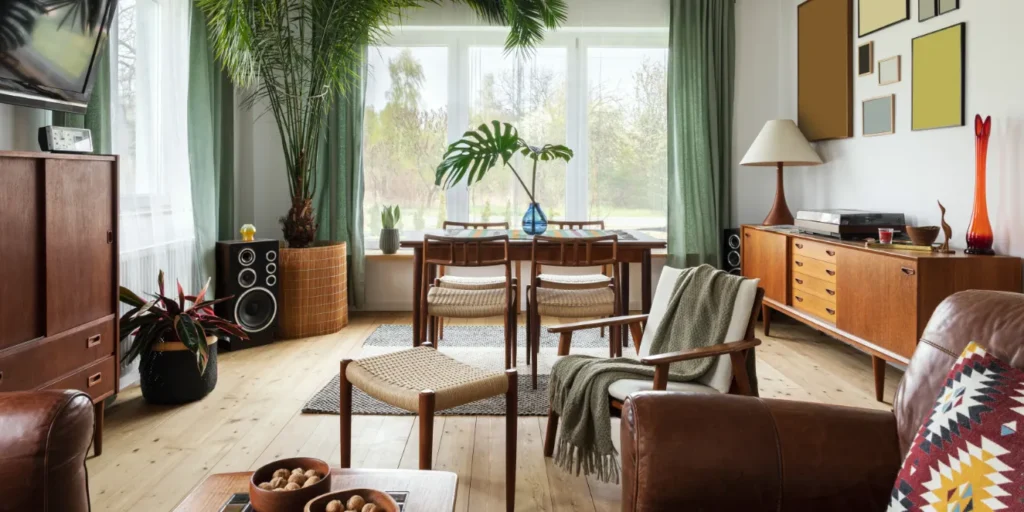
Improved Energy Flow and Well-being
Vastu-compliant design promotes better energy flow throughout interior spaces, contributing to the overall well-being of occupants. By aligning with the natural elements and directional energies, Vastu principles help create environments that feel harmonious and revitalizing.
When energy flows freely without obstruction, it can positively impact physical health, mental clarity, and emotional balance. Occupants may experience reduced stress levels, increased productivity, and enhanced vitality in Vastu-compliant spaces, ultimately leading to a greater sense of well-being and contentment.
Enhanced Harmony and Balance in Spaces
One of the key benefits of Vastu-compliant design is the promotion of harmony and balance within interior spaces. By integrating principles of symmetry, proportion, and alignment, Vastu guidelines create environments that feel visually pleasing and energetically balanced.
When elements are arranged following Vastu principles, spaces exude a sense of tranquility and coherence that fosters a deep sense of connection and grounding for occupants. This harmony extends beyond mere aesthetics, influencing the overall ambiance and atmosphere of the space, making it more inviting and conducive to relaxation and contemplation.
Positive Impact on Occupants’ Lives
Vastu-compliant design has a profound impact on the lives of occupants, enhancing their overall quality of life and well-being. By creating environments that support the natural flow of energy and resonate with universal principles of harmony and balance, Vastu-compliant spaces nurture holistic growth and development for individuals and families alike.
From improved relationships and communication to enhanced creativity and abundance, the positive effects of Vastu-compliant design ripple through every aspect of occupants’ lives, fostering a sense of fulfillment, purpose, and joy.
Conclusion
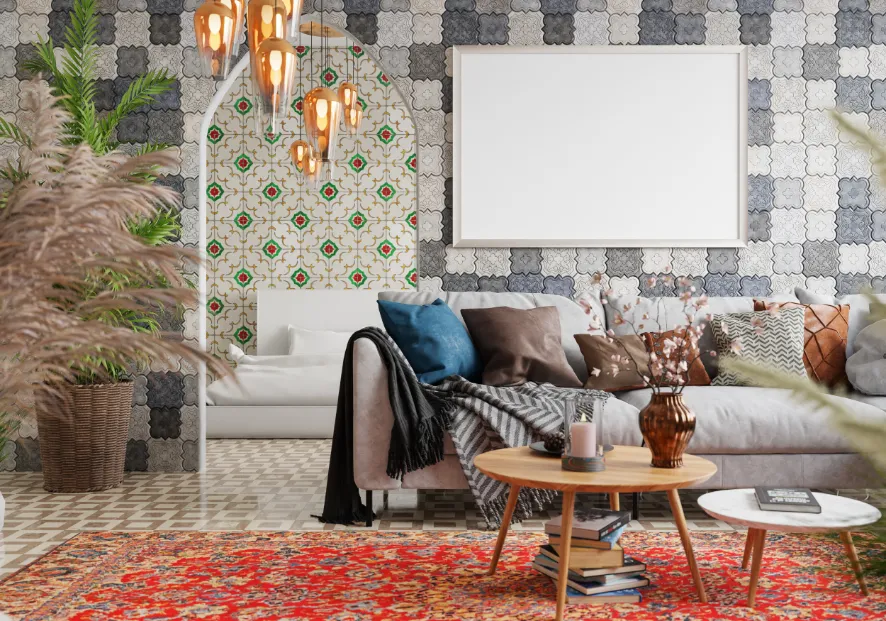
The integration of Vastu Shastra principles into contemporary interior design offers a wealth of benefits that go beyond mere aesthetics. By embracing the wisdom of Vastu, designers can create spaces that promote improved energy flow, enhanced harmony, and a positive impact on occupants’ lives.
Through careful consideration of factors such as orientation, layout, colors, materials, and spatial planning, Vastu-compliant interior design seeks to optimize the flow of energy within a space, fostering a sense of balance and well-being. This improved energy flow not only contributes to physical health and mental clarity but also enhances emotional equilibrium, creating environments that feel nurturing and supportive.
Moreover, Vastu-compliant design promotes harmony and balance in spaces by aligning with universal principles of symmetry, proportion, and alignment. By arranging elements in accordance with Vastu guidelines, designers can create environments that feel visually pleasing and energetically balanced, fostering a sense of tranquility and coherence for occupants.
Most importantly, the positive impact of Vastu-compliant design extends beyond the physical environment to influence the lives of occupants in profound ways. From improved relationships and communication to enhanced creativity and abundance, Vastu-compliant spaces nurture holistic growth and development, enriching the lives of individuals and families alike.
At The White Frame, we recognize the importance of infusing Vastu principles into interior design to craft spaces that are not just aesthetically pleasing but also radiate harmony and positivity. Our team of seasoned designers is dedicated to crafting top-tier interiors that capture our client’s unique tastes while seamlessly integrating Vastu recommendations for a well-balanced and serene living atmosphere.
In essence, by embracing Vastu Shastra in interior design, occupants can create homes and workspaces that resonate with positive energy, fostering a sense of fulfillment, purpose, and joy in their daily lives.
Connect with us to transform your home into a for balanced and uplifting living ambiance!








